The three muskateers
Britain has its largest ever entry in this weekend's Solitaire du Figaro. The sole non-French entries this year are the five from the UK, plus lone Irishman Dave Kenefick. Three – Nick Cherry, Henry Bomby and Sam Goodchild - are back again having competed in 2012, and of these Goodchild, the original Artemis Offshore Academy scholarship winner, is back for a third crack.
For Bomby and Goodchild in particular their Figaro campaigns this season have taken a different complexion. Cut loose from the Artemis Offshore Academy, they have had to fend for themselves in mounting their campaigns (although they do still get considerable help from the Edinburgh and London-based investment company).
They have had to find their own boats – Sam Goodchild’s was formerly campaigned by top Portugese sailor Francisco Lobato, while Henry Bomby has himself a former race winner, chartered from Charles Caudrelier.
And they have had to spend much more time pounding on boardroom doors rather than what they would obviously prefer to be doing – racing.
In their fund raising efforts the two skippers have had mixed results. Bomby has managed to get support from celebrity chef Mitch Tonks, who is fronting Rockfish, a new chain of ‘seafood and chips’ restaurants in the West Country.
“He has been a supporter of mine before, back when I sailed singlehanded around Britain in 2010 when I left school,” says Bomby. “They are opening up a new restaurant in Plymouth, which will be their flagship restaurant by the Aquarium as you come into Sutton Harbour. They were originally going to be a title sponsor for me in the Fastnet race, but I managed to twist their arm to get them to give a bit more for this as well. Most of our activation will be when the boat gets back to the southwest.”
Goodchild has managed to get his boat paid for by a private benefactor, but hasn’t managed to secure title sponsorship. “The money this time is either private or my own. I am trying to use this as a basis to launch a campaign for next year, to show people that even if they put money in now, it will happen next year.” His boat is named Shelterbox - Disaster Relief after a charity he supports.
The campaign for four time UK National Match Racing Champion Nick Cherry has been slightly different in that he has effectively inherited Mark Andrews campaign with the Artemis Offshore Academy when the tall Scot chose to return to his Olympic Finn sailing (and rightly so - last week he won the Delta Lloyd regatta). This came about at the end of March. “I was trying to get hold of a boat anyway - I got close to chartering one, but the money hadn’t come through in time, so this was a bit of a God send,” says Cherry, who is sailing the Artemis Figaro which he and Goodchild campaigned last year in the Transat AG2R.
However this has meant that his training time has been limited. “I did a bit of training in Concarneau, then the Solo Arrimer and the Solo Concarneau and the delivery down here. So it's all been a bit rushed.”
In fact Cherry’s campaign is part Artemis-backed but he is also has support from his new sponsor composites manufacturer Magma Structures. “They are trying to launch themselves,” he explains. “They have a strong history building superyacht rigs and oil pipes is their core business, but they want to push more into the marine market.”
A welcome reception
The start of this year’s Solitaire is in France's third largest city, Bordeaux, some 50 miles inland up the mighty Gironde. All three skippers have been stunned by the reception they received when the Solitaire fleet arrived in Bordeaux where the ‘Fete le Fleuve’ festival (that the Solitaire is part of) has been in full swing this week.
As Goodchild says: “Bordeaux is pretty cool. I haven’t seen crowds like this for sailing outside of the Vendee Globe. We had 30,000 people welcoming us in on Friday, which was pretty impressive. Then the weekend was pretty busy and even weekdays, when I thought it would be a bit quieter, the pontoons are still rammed. It is a lot more than I expected.”
And a lot more than the Solitaire has seen in previous years: “I guess the thing here is that it is a big city. When are you in Brittany, in Paimpol or somewhere, you take over the whole place and it’s the only thing that’s happening. Here we are a bit on the side, but the event is significantly bigger in a bigger city.”
Bomby agrees: “It has been amazing. The weekend was really busy. You couldn’t move once you got off the dock. It is cool to have so many people here and on the way in it was amazing - we were metres from the wall and I had the English flag on the boat and people were shouting ‘Good luck’ in English. It was a great experience and when we leave on Saturday it will be even better.”
So they are signing autographs? “We all have on the Patton stand – we are sponsored by Patton Watches,” Bomby continues. Typically classrooms of marauding kids descend on the Solitaire fleet with their guidebooks showing mugshots of the skippers - any they see gets swamped. Otherwise it is the famous skippers such as Michel Desjoyeaux, Armel le Cleac’h and Yann Elies who regularly get stopped.
Training
While they have had to spend more time managing their projects, the time Goodchild and Bomby have spent training has been a step up from previous years. Both have been fortunate enough to be admitted into the famous Figaro training centre in Port la Foret.
The main advantage of this is as Goodchild puts it: “There was a minimum of 10 boats and half of those boats have been in the top 10. There have been five people in our group of 20 who have won the Figaro before.”
Also unlike last year, when Goodchild and Nick Cherry were focussing on racing doublehanded in the Transat AG2R, this year their training has concentrated on going solo.
Three years in (for Goodchild) what’s there to learn? “It is a 30ft Beneteau – they are not complicated,” he states. “But then you get people who train for 20 years in a Laser and are still learning stuff. It is more about making things instinctive, so that when things goes wrong it happens naturally.”
Bomby says that training in ‘Portlaf’ removes some of the unknowns. “Rather than rocking up at an event and wondering how much better the rest are going to be than you, you are sailing against them all the time.
“You know your settings are good. If you are lined up next to someone good for half an hour and you are the same speed, then you know you are good in those conditions, whereas if you are say tight reaching with the kite and they have a different set-up to you or they absolutely smoke you, then it is a case of ‘that is where I need to work’. In a race that might not be so obvious.”
Bomby agrees that successful Figaro racing is about familiarity, experience and getting as much as possible to be instinctive. He cites the example of his autopilot problem during leg two of last year's Solitaire which caused him to finish last by eight hours, effectively destroying his chances overall in the race. This time he has a back-up system and will simply switch over to that and won’t get distracted. “That happened to me in the Solo Concarneau - my pilot ram failed as I was going through the Raz de Sien so I just changed over to the second pilot and didn’t bother to try and fix the first one. I just kept on racing."
He continues: “When you are young they talk about ‘keeping your head out of the boat’ and that is essentially what you are trying to do in the Figaro. You don’t want to focus on trimming. The top guys know all the settings and know how to make the boat go fast - they don’t think about any of that, that just happens. All they are thinking about is the next move - when is the next shift coming, the next tidal change, the next headland, the next land effect, are we going to get some thermal breeze here, etc etc?”
But they have made progress. “It is more brutal. When we first went there [Port la Foret] we were definitely at the back and now we are definitely fighting in amongst them. Last year I was really having to work hard to keep up with the good guys, whereas now I am better at setting the boat up under pilot and working less hard for the same speed.”
And of course in the Solitaire it is not just about driving the boat fast. Vital is the personal management, in particular sleep and food. “I am quite good at not sleeping,” says Bomby. “I feel I am good at decision making on when to sleep. But food I am really really bad at. I don’t eat and I lose a lot of energy. Last year I lost 9kg on the whole of the Solitaire - I started at 90kg and finished at 81kg. I had meals but I’d never get aroud to making them. So now in the rope bags in the cockpit and in my pockets and easy access down below is all the food. Just making everything as easy as possible, is key. People tell you that, but you have to learn that the hard way.”
Nick Cherry’s training for the Figaro has been slightly unusual in that he has been campaigning an Olympic 470 dinghy with Rob Gullen, who used to crew for Cherry when he was tuning partner for Shirley Robertson’s Olympic Yngling campaign. The duo competed at the Trofeo Princess Sofia in Palma and are still planning to racing the 470 Worlds in La Rochelle later this year.
470s and Beneteau Figaro II’s – poles apart? Strangely enough not. In fact both still use spinnaker poles. As Cherry says: “They go similar speeds, they are fairly close, mildly dull symmetrical boats, a lot of the angles are quite similar. There are a few things I’ve learned about rig set-up which is easier and quicker on a 470, compared to having to rig up a Figaro by yourself and organise speeds tests offshore.”
Money and the prospect of a British Solitaire winner
Since the days of Sam Davies and Skandia a decade ago, there have been plenty of British attempts on the Solitaire. Prior to the present crop there was Phil Sharp, Nigel King, Conrad Humphreys, etc. But to date only Phil Sharp’s 18th place two years ago has bettered Sam Davies’ pair of 19th placed finishes.
So are British solo sailors plain average compared to their French equivalents? The feeling seems to be that there is the talent, but what is lacking is the funding to campaign on an equal footing. Anyone who follows the ultimate expression of one design racng, in the Olympic Games, knows that a key requirement to being competitive is to have at least equal funding to the opposition. And this to date has never happened for British competitors in the Solitaire. If say the top ten campaigns have budgets of 200-250,000 Euros/year, British campaigns have been running on a fraction of this.
The annual budget for Henry Bomby for example is £34,000. “It means I am on the start line, with new sails and a good boat and having done some good training which are the main factors that are going to affect me in my performance. I am quite happy. But I have one of the smallest budgets here,” he says.
The advantages of having a bigger budget are obvious. There is more opportunity to train and to get in the best coaches, specialists and have full time shore support. In the Figaro the sails aren’t one design, so potentially the sky is the limit in terms of sail development and the top campaigns will regularly purchase different suits to trial before the season starts.
But the perennial problem for British sailors is one of chicken and egg – even if some silvery tongued lucky spark did manage to raise £250,000 in the UK for a Figaro campaign, there just wouldn’t be the return on investment.
As Bomby puts it: “It is just commercially viable for me to raise £30-50,000. I can offer a sponsor a return for that level of money, but any more than that and it starts to be questionable whether a return is being met. I can’t see that happening unless the profile gets raised in the UK more. The way that could happen is that if the race came close to somewhere near where I live and I could get a big local company involved and they do a huge amount of corporate stuff while we’re there and a huge amount of people come down.”
He adds that at present there are a lot of people in the sailing world (let alone the general public) who don’t know about these brave British sailors who spend their lives in France attempting to take on the French. “Whereas if you ask anyone here in France, they all seem to know about it.”
Bomby admits his campaign has been hand to mouth, just scraping the money together in time to meet deadlines. He has been very lucky to get a deal on Charles Caudrelier’s boat. “I got the boat super cheap because Charles helped me out. Basically someone helped him out when he got into the Figaro and he is in quite a good position these days with the boat - the boat has paid for itself already and he was looking for someone to help out and I was in the right place at the right time with the right recommendations. I was very lucky.”
Both Goodchild and Bomby has received support in kind this season from the Artemis Offshore Academy, effectively ‘£10,000 worth of help’. This has come in different ways such as donation of sails or support from shore crew.
In Goodchild’s case the Artemis backing has gone into getting him some new sails. Plus there’s the chance to be part of the AOA logistics machine: “I have had a lot of help - just small things like booking all the accommodation foir the Figaro has been done for me, which saves me doing all the research, because they are doing it anyway, so they can just add another room.”
In addition to the Academy support, having the likes of Charles Darbyshire at OC Sport at the end of a phone has also proved beneficial. As Bomby puts it: “They have so much experience with the numerous different sponsorship deals they’ve put together. They offer so much advice which is really good. We are really lucky in that.”
Objectives
These three sailors, Goodchild, Bomby and Cherry has set themselves the target of achieving the best British result even in the Solitaire (ie finish 17th or better).
“It is a small thing to aim for, but you can easily have a bad leg and three good legs in which case you won’t get a good result,” says Goodchild – the Solitaire is scored on cumulative elapsed time across the legs which makes for a much more brutal competition, without the cotton wool of discards. One mistake in three weeks of sailing and you’re toast.
And this year post-Vendee year in particular sees a lot of the French ‘heroes’ returning to the class, making it no easier. As Bomby says: “This year is going to be a hard year to be fair, because you have the top eight boats, and even if we sailed an absolute blinder, to the best of our ability and we got lucky as well, we still wouldn’t beat the Yann Elies, the Jeremie Beyous and Armels – they are in a different league to us.
“Last year only Nicolas Lunven had won the Solitaire before, but this year there are six people who have won it and another eight who’ve been on the podium. As a fan of the race, it is going to be interesting to watch to see how it pans out. It is one of the most competitive years and the hardest Solitaires we’ve seen for a long time.”
Nick Cherry adds: “There are only six or seven boats which haven’t done the race before. There are six guys who have won it before. So all the people in the middle, 20 have all done the race at least once or twice. At least 30 guys here have been training full time all year round and they have all got strong backgrounds in other sailing. It is a professional circuit in France and it is not something you come into unless you have a strong background elsewhere. Even at the back of the fleet the guys you race against are not pushovers. It does means that even if you are in 35th, you not going to get zapped back up to the mid-20s. You have to work for every place. Even if you finish half way up the fleet you feel good about yourself. You know you’ve done something right.”
While the Brits are most unlikely to be in the running for line honours they also seem set to have a full-on battle between themselves out on the water.

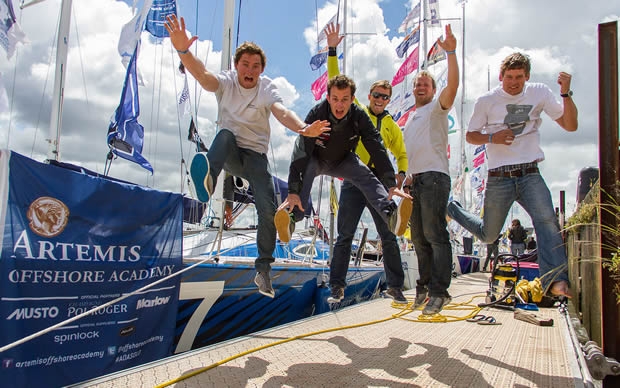
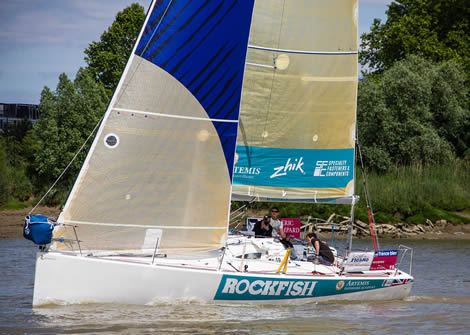
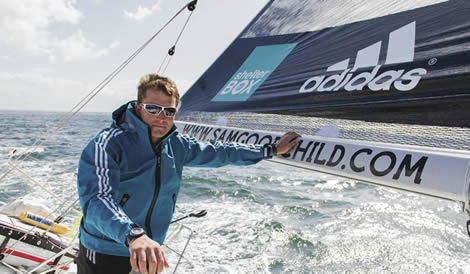
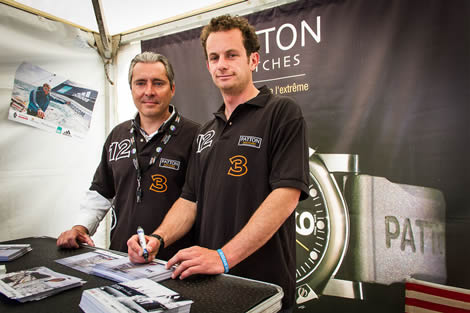
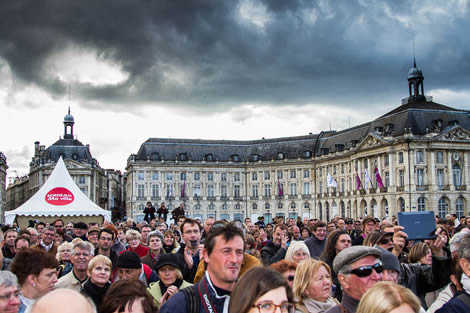
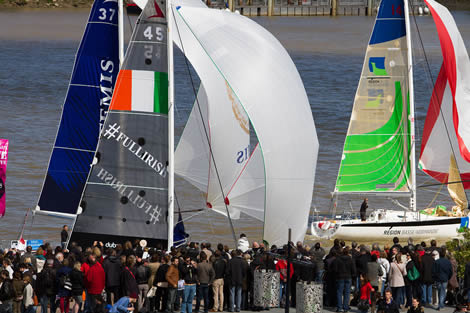
_470.jpg)
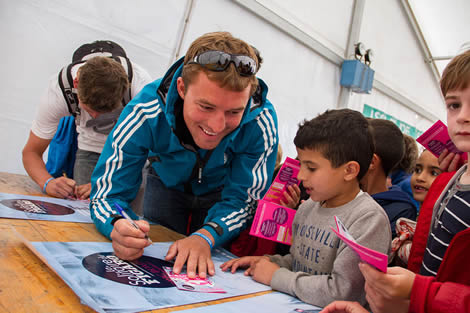
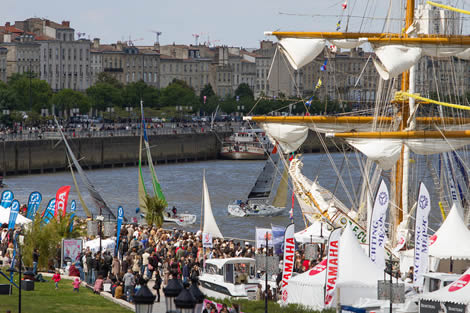
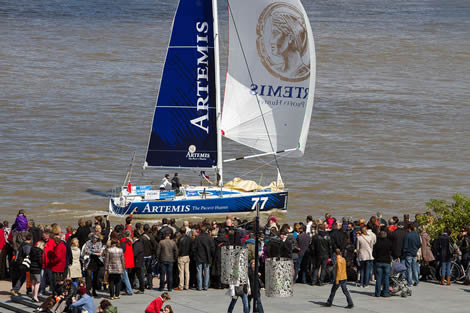
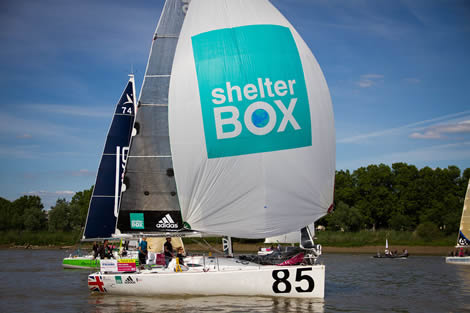
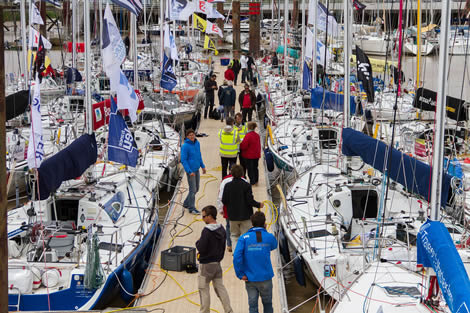
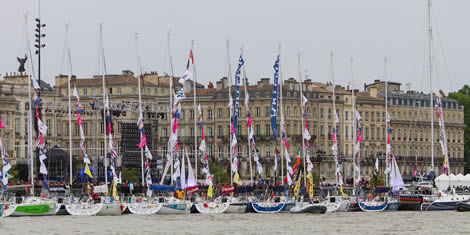









Latest Comments
Add a comment - Members log in